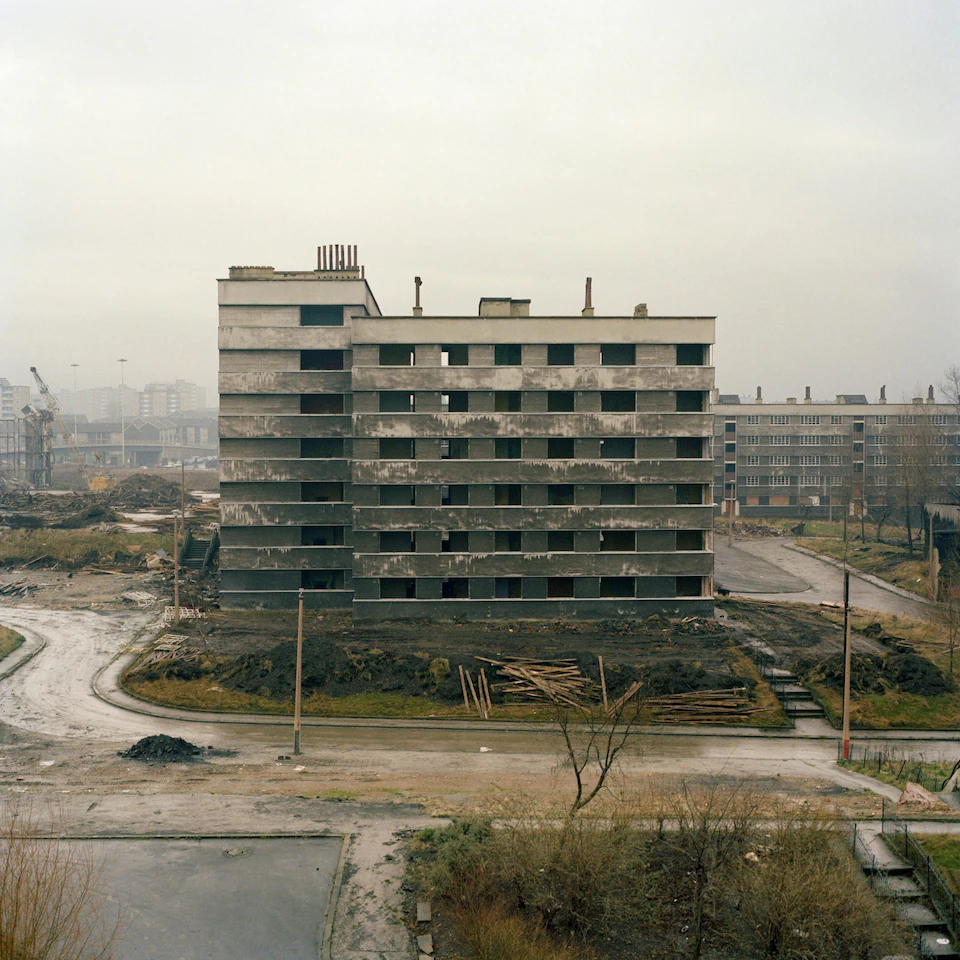The Telegraph
Peter Mitchell


‘It was weird coming up from London to here,” the photographer Peter Mitchell tells me, over coffee in the ornate café of Leeds Art Gallery. “It really seemed like a different place.”
Mitchell – who, at 81, is the focus of a new show at the gallery – didn’t take up photography until, as a 20-something art-school graduate, he moved to Leeds in 1972 and began working as a delivery driver. He’d be up early, driving his truck through the Yorkshire city’s eerie deindustrialised and dilapidated landscape, and something about its fragility would make him reach for his camera.
“I’d see something being demolished,” says Mitchell “or somebody in a place that looked like it would go at some point soon” – and he’d preserve it in a photograph.
Seven years later, the pioneering Impressions Gallery in York mounted an exhibition of Mitchell’s pictures that would rewrite the rules of photography. Titled A New Refutation of the Viking 4 Space Mission, it juxtaposed his shots of Leeds’s traditional shopfronts and factories with Nasa images from the surface of the red planet and was, as fellow photographer Martin Parr has noted, “the first colour show, at a British photographic gallery, by a British photographer”.
To look at Mitchell’s shots of Leeds’s long-vanished landmarks – as more than 100,000 followers of an Instagram account set up by his publisher have done – is to experience a form of time travel. Though not typically picturesque, Mitchell’s work captures the beauty of the mundane, be it housing estates, red-brick terraced streets or scarecrows. He documents the everyday life of Leeds and its people with an authenticity that underpins his deep affinity to the city.
Opening next month, almost half a century after his last exhibition at Leeds Art Gallery, Nothing Lasts Forever will feature many of Mitchell’s best known 1970s pictures alongside unseen, more abstract images “of nothing”, as he puts it. “There’ll be a derelict chair,” he explains. “There’ll be an old sofa with all this stuff coming out. Or one that’s been burnt and you can just see the skeleton of it.”
These pictures were taken in Chapeltown – the Leeds suburb to which Mitchell moved in 1972 – and echo the gradual demise of a thriving community that he has witnessed over the years. Also on show will be his Ghost Train Man series: portraits of Francis Gavan, a local fairground worker, posing in front of his attraction adorned with a giant rusting skull, whom Mitchell photographed “every year until he died” from 1977 to 2019.
After Gavan’s death, Mitchell saved the ghost train from the scrap heap, and took it home – parts of it will appear in the exhibition. Mitchell tells me that he has been burgled five times in the past year, but “with the ghost train inside, they couldn’t get the door open properly.” Although nothing of value was taken, he says, the break-ins “affected me. Not frightened, but angered.”
Mitchell was born in Salford in 1943. Six weeks later, his family moved to Catford, east London. After working briefly for the Ministry of Housing as a cartographer, then studying graphic design, he decamped to Leeds on a whim following a trip to see a group of friends who were living in a squat in the suburb of Headingley.
Mitchell and his partner Sheila now live mainly in a cottage 70 miles outside Leeds, but he still returns regularly to his Chapeltown home and can’t imagine another place as his muse.
“How could I leave?” he asks, incredulous. “Where would I go?”